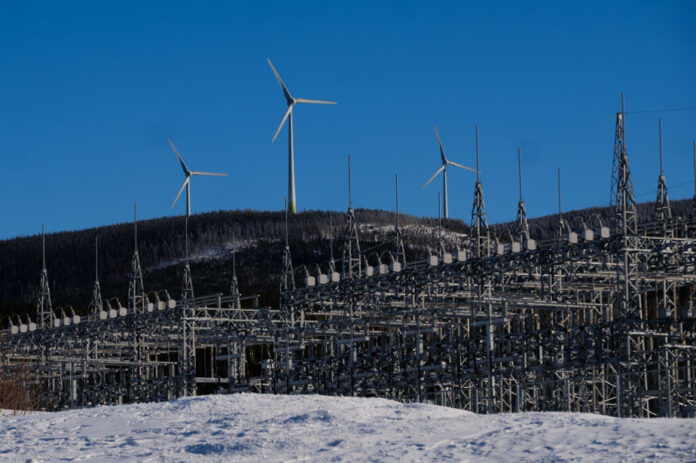(Ottawa) In the hope of rebalancing the rules of the game with the American climate industrial strategy, Ottawa is banking on an 83 billion offensive spread over a decade, in particular to double the production of renewable electricity – the cornerstone of the strategy.
Taking into account two measures announced in the last year, the budget presented Tuesday by the federal Minister of Finance Chrystia Freeland plans to distribute approximately 28 billion until 2027-2028 through a multitude of tax credits. The extension of aid over the next six years should come with a bill of around 55 billion. However, the annual breakdown of this second tranche of aid is not yet detailed.
Sign of the boost that the Trudeau government hopes to give in terms of renewable energy production, it allows state companies like Hydro-Quebec – which will have to increase its production – and other public electricity services to be eligible for tax credits, a precedent. The manufacture of clean technologies or battery materials, the purchase of equipment for the production of clean hydrogen and carbon storage are on the list of sectors eligible for refundable tax credits which vary between 15 and 40% , depending on the niche.
“But the backbone of the plan is clean electricity generation,” a senior official explained during the budget lock-up. If there is one essential element to the transition to a low-carbon economy, it is the availability of affordable renewable energy. »
What do you think of this federal budget tabled by Chrystia Freeland?
Ottawa’s plan is the response to the Inflation Reduction Act (IRA), with $370 billion to support projects like clean energy generation and building electric vehicles with grants and credits of tax.
This American law raises fears on this side of the border. The Quebec electric and smart transportation industry demanded a Canadian version of the IRA to avoid being overtaken. Additionally, a report from the Privy Council Office — whose role is to provide nonpartisan advice to the prime minister and cabinet — written last September suggested hitting back at the Biden administration to avoid escaping projects.
“This is our response,” said a federal mandarin. You have to encourage the level of investment and the level you see [this Tuesday] is a substantial effort. »
Crown corporations such as Hydro-Québec will be eligible for the clean energy investment tax credit (15%). The measure will finance the production of electricity (hydroelectric, wind, solar, etc.), transmission lines and the rejuvenation treatments offered to existing installations.
Anything that revolves around the battery industry – an important project in the eyes of the Legault government in Quebec – will also be eligible for a reimbursement of up to 30% of the investment for the purchase of equipment. The expenses must have been incurred after the presentation of the budget. Cost of the measure: 4.5 billion over five years.
A similar mechanic applies to the clean hydrogen niche (5.6 billion) and carbon storage.
Overall, Ottawa’s plan responds “in good part” to fears that emanated from the IRA, said Robert Asselin, senior vice-president at the Business Council of Canada. There are, however, a few downsides.
“I think it’s incomplete,” says Asselin. The Americans have a much more developed industrial base than here and they put more emphasis on research and development. They see this not only as a mechanism for reducing greenhouse gas emissions, but for creating wealth. »
The Trudeau government is taking a different trajectory than its American neighbor when it comes to financial aid. It opts for investment tax credits rather than subjecting it to a level of production, as is the case south of the border.
Ottawa believes that its method promotes efficiencies and reduced production costs. It also aims to fill an investment gap, senior federal officials say. For example, a refundable tax credit of 30% would allow the promoter of a 50 million project to obtain a refund of 15 million.
If the measure offers a boost to a greater number of companies, there is a risk, underlines Stéphane Leblanc, partner in taxation at EY.
“When the investment project is bad, the tax credit is there anyway,” explains the expert. In [the United States] financial aid is given more on the end of the process [production]. »















